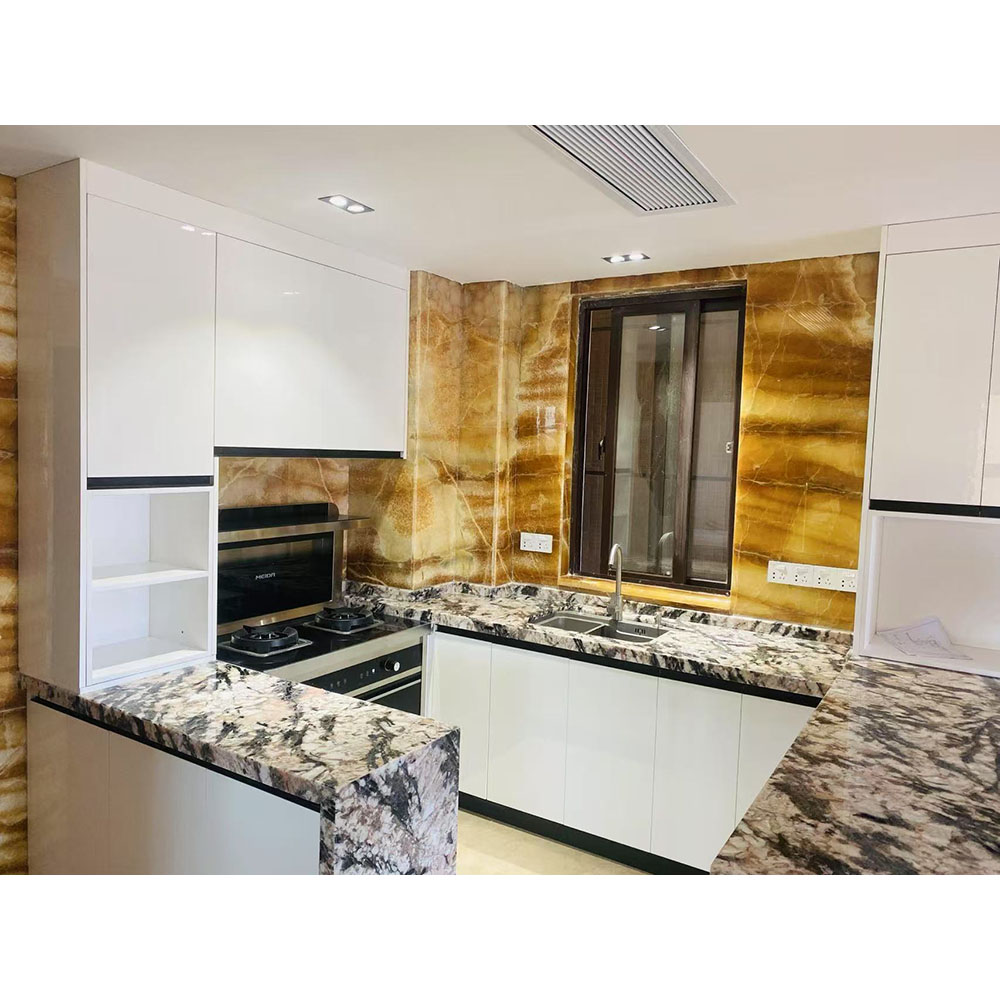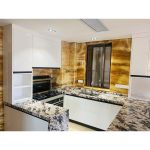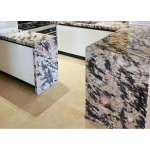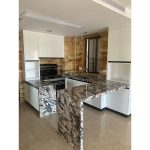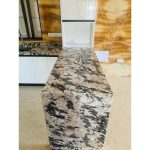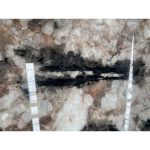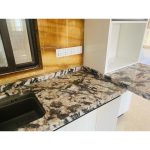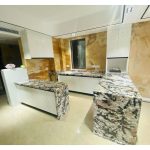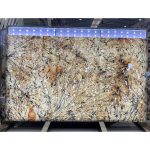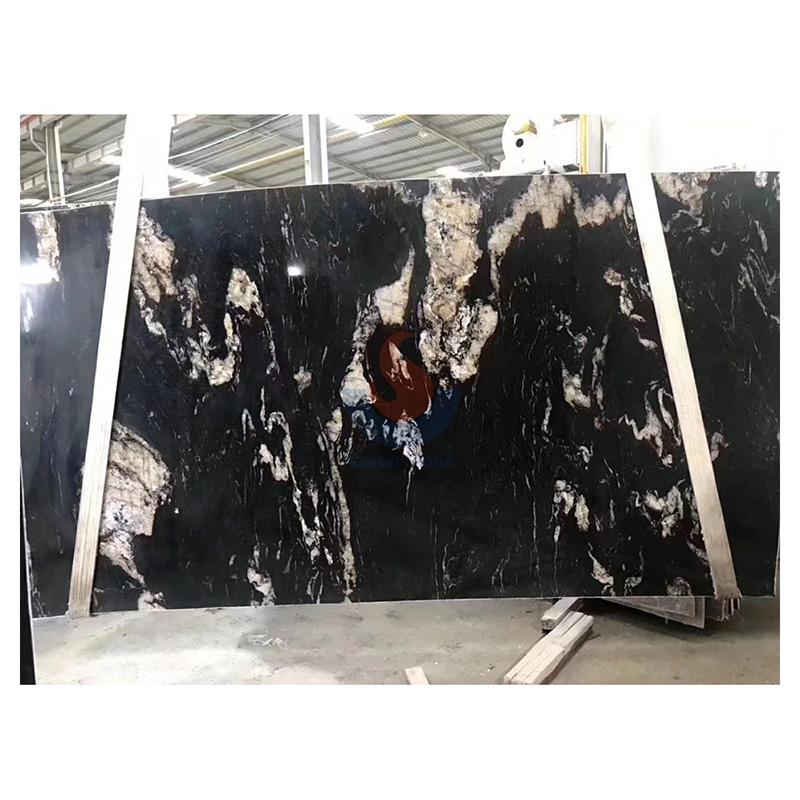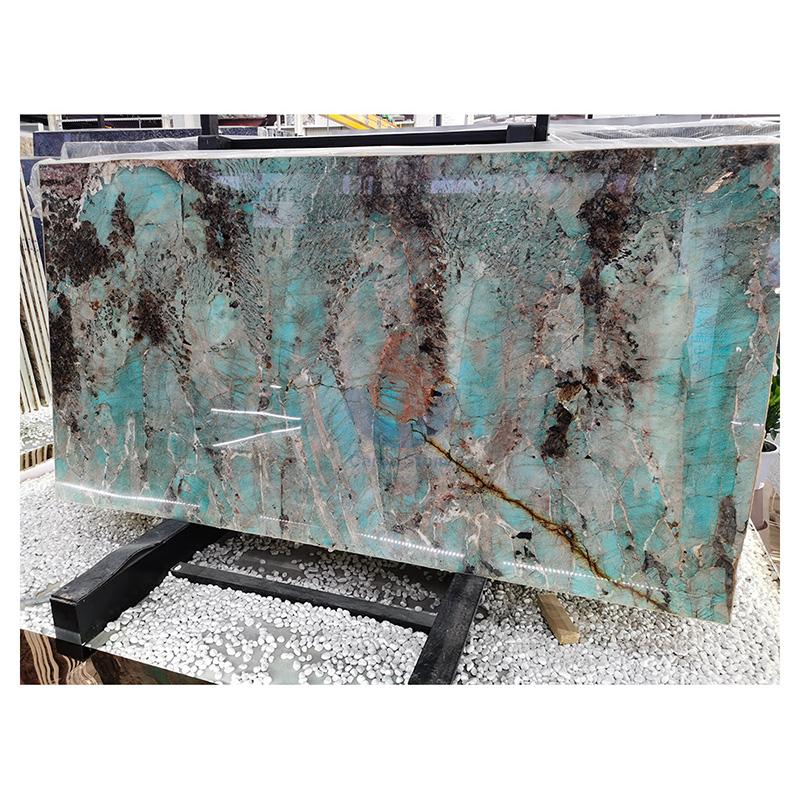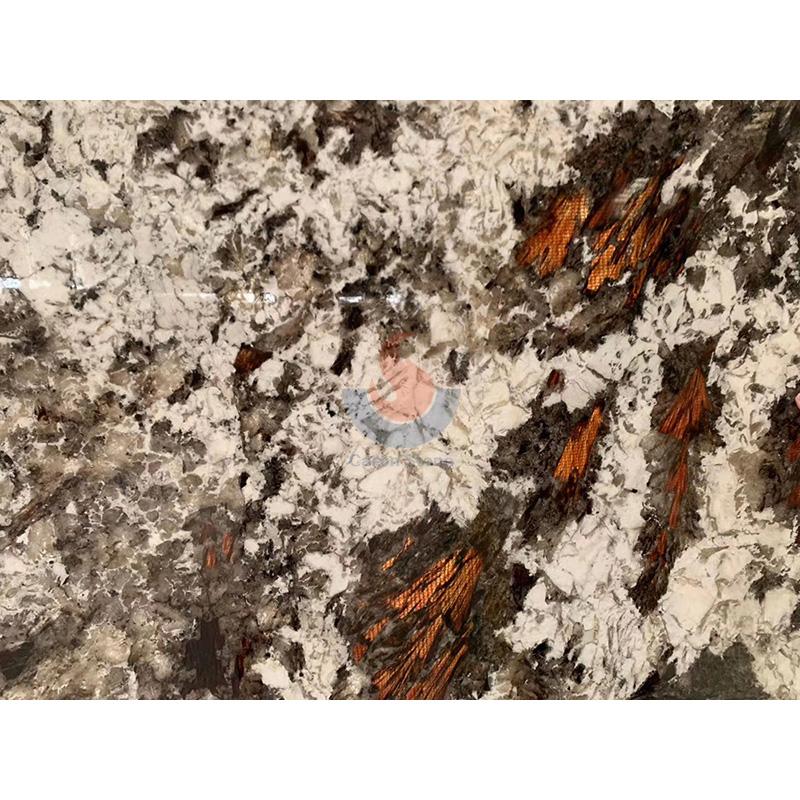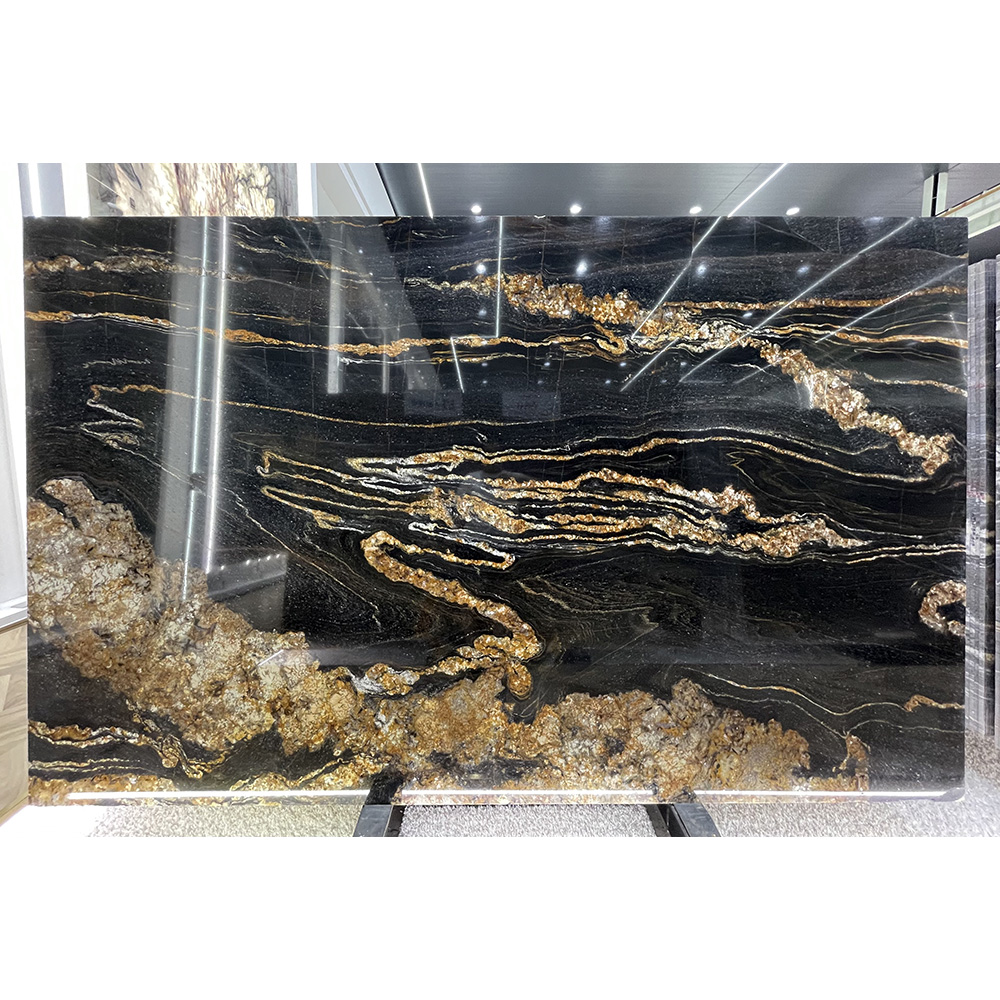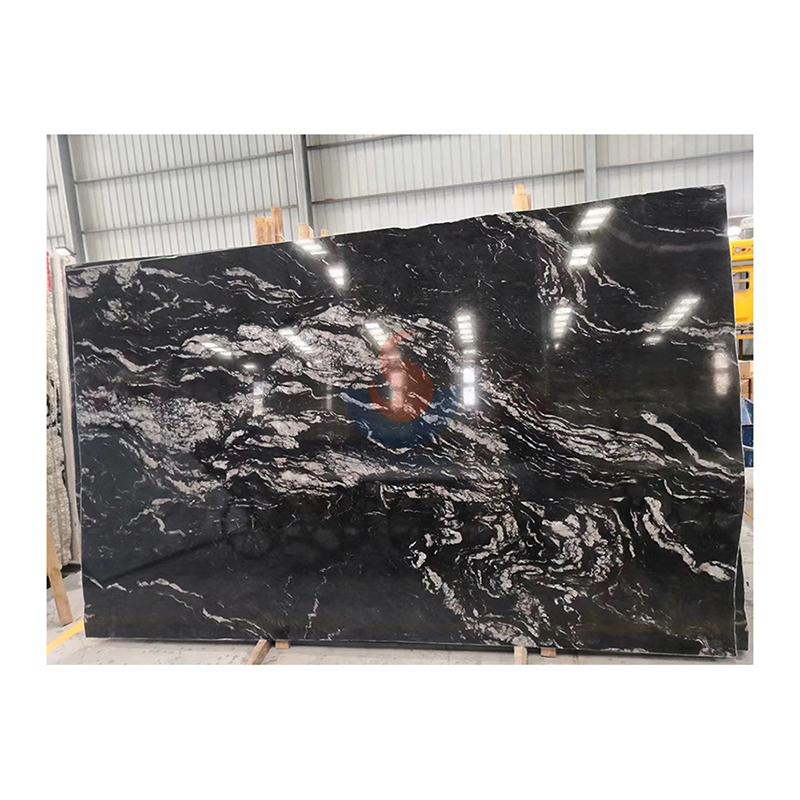» Pink Granite Kitchen Countertop
Granite kitchen countertops have long been a top choice for homeowners and designers due to their natural beauty, durability, and versatility. Whether you are remodeling your kitchen or building a new home, granite countertops can add a touch of elegance and sophistication to your space. This article will guide you through the key considerations for choosing the perfect granite countertops, including color selection, dimensions, and design options.
Key Features of Granite Countertops
1. Durability and Longevity
Granite is renowned for its exceptional durability, making it an ideal choice for kitchen countertops. This natural stone can withstand heavy use, including cutting, chopping, and even occasional spills. Unlike other materials, granite is highly resistant to scratches, stains, and heat, ensuring that your countertops maintain their pristine appearance for years to come. This durability also extends to its resistance to heat, making it an ideal surface for cooking and food preparation.
2. Aesthetic Appeal
One of the most striking features of granite is its unique and varied appearance. Available in a wide range of colors and patterns, granite countertops can complement any kitchen design. Whether you prefer a classic look or something more contemporary, there is a granite option that will suit your style. The natural veining and texture of granite add a touch of elegance and sophistication to any space.
3. Customizable Dimensions
Granite countertops can be tailored to fit any kitchen layout and design. Whether you have a small kitchen island or an expansive countertop area, granite can be customized to meet your exact specifications. Standard dimensions for granite countertops include:
-
Thickness: Typically 1 to 2 inches (2.5 to 5 cm), with thicker edges adding a sense of luxury.
-
Depth: Standard depth ranges from 24 to 26 inches (61 to 66 cm), but can be extended for larger kitchens or islands.
-
Length: Countertops can range from 6 to 12 feet (1.8 to 3.6 meters) in length, depending on the available space.
Choosing the Right Granite Color
1. Consider Your Kitchen Style
The style of your kitchen is a fundamental factor in choosing the right granite color. Different styles often call for different color schemes and patterns.
-
Modern and Minimalist Kitchens: Opt for neutral colors like whites, grays, or light beiges. These colors create a clean and sophisticated look. Patterns should be subtle and uniform to maintain a minimalist aesthetic.
-
Traditional and Classic Kitchens: Choose warm tones such as creams, tans, or light browns. These colors add a sense of warmth and coziness. Look for granites with more pronounced veining or patterns to add character.
-
Contemporary and Transitional Kitchens: Combine elements from both modern and traditional styles. You can use darker colors like blacks, dark grays, or rich browns. These colors are bold and make a statement, especially when paired with lighter cabinetry.
2. Evaluate Your Cabinetry and Backsplash
The color of your cabinetry and backsplash plays a significant role in determining the right granite color.
-
Light Cabinetry: Light-colored cabinets can handle darker granite countertops. This contrast creates a dynamic and visually appealing look. For example, white cabinets paired with dark gray or black granite can create a striking contrast.
-
Dark Cabinetry: If you have dark cabinets, consider lighter granite colors to balance the space. Lighter granites can brighten up the kitchen and make it feel more open and airy.
-
Neutral Cabinetry: Neutral-colored cabinets offer more flexibility. You can choose a granite color that complements the cabinetry or adds a pop of color to the space.
3. Think About the Overall Color Scheme
Consider the existing color scheme of your kitchen, including walls, flooring, and appliances. The granite color should harmonize with these elements.
-
Monochromatic Scheme: If you prefer a monochromatic look, choose a granite color that matches the dominant color in your kitchen. This creates a cohesive and unified design.
-
Complementary Colors: For a more vibrant and dynamic look, choose a granite color that complements the other colors in your kitchen. For example, if your kitchen has blue accents, a granite with blue or green flecks can tie the space together.
-
Neutral Base: If you have a neutral color scheme, you can use granite to introduce a pop of color. A colorful granite can become a focal point in your kitchen.
Design Options and Patterns
1. Edge Profiles
The edge profile of your granite countertops can add a touch of elegance and sophistication to your kitchen. Common edge profiles include:
-
Bullnose: A rounded edge that provides a smooth, polished look.
-
Ogee: A more elaborate, S-shaped edge that adds a touch of luxury.
-
Beveled: A slanted edge that creates a modern, streamlined appearance.
2. Patterns and Veining
Granite patterns and veining can add character and uniqueness to your kitchen.
-
Subtle Patterns: For a more uniform and clean look, choose granites with subtle patterns and minimal veining. This is ideal for modern and minimalist designs.
-
Bold Patterns: If you want to make a statement, opt for granites with bold patterns and pronounced veining. These can add visual interest and create a focal point in your kitchen.
Installation and Maintenance
1. Professional Installation
Granite countertops require precise measurement and installation to ensure a seamless fit. It is highly recommended to hire a professional installer to handle this process. A professional will ensure that your countertops are measured accurately, cut to size, and installed correctly.
2. Maintenance Tips
While granite is highly durable, it does require some maintenance to keep it looking its best:
-
Sealing: Granite countertops should be sealed periodically to protect them from stains. The frequency of sealing depends on the type of granite and the sealer used.
-
Cleaning: Use a mild soap and water to clean your granite countertops daily. Avoid harsh chemicals and abrasive cleaners, as they can damage the surface.
-
Regular Maintenance: Wipe up spills immediately to prevent staining. Regularly check for any signs of wear or damage and address them promptly.
Leave Your Message
Write your message here and send it to us





